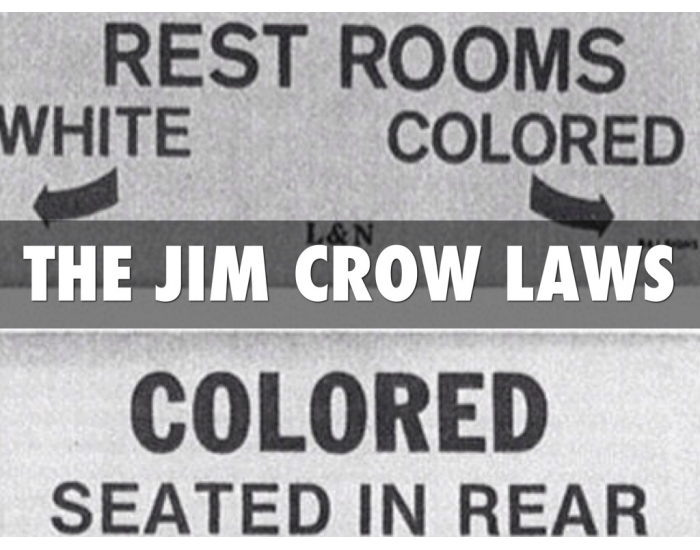
Part 1 (1619 – 1896)
By Black PR Wire
In August of 1619, a journal entry recorded that “20 and odd” Angolans, kidnapped by the Portuguese, arrived in the British colony of Virginia and were then were bought by English colonists.
The date and the story of the enslaved Africans have become symbolic of slavery’s roots, despite captive and free Africans likely being present in the Americas in the 1400s and as early as 1526 in the region that would become the United States.
The fate of enslaved people in the United States would divide the nation during the Civil War. And after the war, the racist legacy of slavery would persist, spurring movements of resistance, including the Underground Railroad, the Montgomery Bus Boycott, the Selma to Montgomery March, and the Black Lives Matter movement. Through it all, Black leaders, artists and writers have emerged to shape the character and identity of a nation.
Slavery Comes to North America , 1619
To satisfy the labor needs of the rapidly growing North American colonies, white European settlers turned in the early 17th century from indentured servants (mostly poorer Europeans) to a cheaper, more plentiful labor source: enslaved Africans. After 1619, when a Dutch ship brought 20 Africans ashore at the British colony of Jamestown, Virginia, slavery spread quickly through the American colonies. Though it is impossible to give accurate figures, some historians have estimated that 6 to 7 million enslaved people were imported to the New World during the 18th century alone, depriving the African continent of its most valuable resource—its healthiest and ablest men and women.
After the American Revolution, many colonists (particularly in the North, where slavery was relatively unimportant to the economy) began to link the oppression of enslaved Africans to their own oppression by the British. Though leaders such as George Washington and Thomas Jefferson—both slaveholders from Virginia—took cautious steps towards limiting slavery in the newly independent nation, the Constitution tacitly acknowledged the institution, guaranteeing the right to repossess any “person held to service or labor” (an obvious euphemism for slavery).
Many northern states had abolished slavery by the end of the 18th century, but the institution was absolutely vital to the South, where Black people constituted a large minority of the population and the economy relied on the production of crops like tobacco and cotton. Congress outlawed the import of new enslaved people in 1808, but the enslaved population in the U.S. nearly tripled over the next 50 years, and by 1860 it had reached nearly 4 million, with more than half living in the cotton–producing states of the South.
Rise of the Cotton Industry, 1793
n the years immediately following the Revolutionary War, the rural South—the region where slavery had taken the strongest hold in North America—faced an economic crisis. The soil used to grow tobacco, then the leading cash crop, was exhausted, while products such as rice and indigo failed to generate much profit. As a result, the price of enslaved people was dropping, and the continued growth of slavery seemed in doubt.
Around the same time, the mechanization of spinning and weaving had revolutionized the textile industry in England, and the demand for American cotton soon became insatiable. Production was limited, however, by the laborious process of removing the seeds from raw cotton fibers, which had to be completed by hand.
In 1793, a young Yankee schoolteacher named Eli Whitney came up with a solution to the problem: The cotton gin, a simple mechanized device that efficiently removed the seeds, could be hand–powered or, on a large scale, harnessed to a horse or powered by water. The cotton gin was widely copied, and within a few years the South would transition from a dependence on the cultivation of tobacco to that of cotton.
As the growth of the cotton industry led inexorably to an increased demand for enslaved Africans, the prospect of slave rebellion—such as the one that triumphed in Haiti in 1791—drove slaveholders to make increased efforts to prevent a similar event from happening in the South. Also in 1793, Congress passed the Fugitive Slave Act, which made it a federal crime to assist an enslaved person trying to escape. Though it was difficult to enforce from state to state, especially with the growth of abolitionist feeling in the North, the law helped enshrine and legitimize slavery as an enduring American institution.
Nat Turner’s Revolt, August 1831
In August 1831, Nat Turner struck fear into the hearts of white Southerners by leading the only effective slave rebellion in U.S. history. Born on a small plantation in Southampton County, Virginia, Turner inherited a passionate hatred of slavery from his African–born mother and came to see himself as anointed by God to lead his people out of bondage.
In early 1831, Turner took a solar eclipse as a sign that the time for revolution was near, and on the night of August 21, he and a small band of followers killed his owners, the Travis family, and set off toward the town of Jerusalem, where they planned to capture an armory and gather more recruits. The group, which eventually numbered around 75 Black people, killed some 60 white people in two days before armed resistance from local white people and the arrival of state militia forces overwhelmed them just outside Jerusalem. Some 100 enslaved people, including innocent bystanders, lost their lives in the struggle. Turner escaped and spent six weeks on the run before he was captured, tried and hanged.
Oft–exaggerated reports of the insurrection—some said that hundreds of white people had been killed—sparked a wave of anxiety across the South. Several states called special emergency sessions of the legislature, and most strengthened their codes in order to limit the education, movement and assembly of enslaved people. While supporters of slavery pointed to the Turner rebellion as evidence that Black people were inherently inferior barbarians requiring an institution such as slavery to discipline them, the increased repression of southern Black people would strengthen anti–slavery feeling in the North through the 1860s and intensify the regional tensions building toward civil war.
Abolitionism and the Underground Railroad, 1831
The early abolition movement in North America was fueled both by enslaved people’s efforts to liberate themselves and by groups of white settlers, such as the Quakers, who opposed slavery on religious or moral grounds. Though the lofty ideals of the Revolutionary era invigorated the movement, by the late 1780s it was in decline, as the growing southern cotton industry made slavery an ever more vital part of the national economy. In the early 19th century, however, a new brand of radical abolitionism emerged in the North, partly in reaction to Congress’ passage of the Fugitive Slave Act of 1793 and the tightening of codes in most southern states. One of its most eloquent voices was William Lloyd Garrison, a crusading journalist from Massachusetts, who founded the abolitionist newspaper The Liberator in 1831 and became known as the most radical of America’s antislavery activists.
Antislavery northerners—many of them free Black people—had begun helping enslaved people escape from southern plantations to the North via a loose network of safe houses as early as the 1780s called the Underground Railroad.
Dred Scott Case, March 6, 1857
On March 6, 1857, the U.S. Supreme Court handed down its decision in Scott v. Sanford, delivering a resounding victory to southern supporters of slavery and arousing the ire of northern abolitionists. During the 1830s, the owner of an enslaved man named Dred Scott had taken him from the slave state of Missouri to the Wisconsin territory and Illinois, where slavery was outlawed, according to the terms of the Missouri Compromise of 1820.
Upon his return to Missouri, Scott sued for his freedom on the basis that his temporary removal to free soil had made him legally free. The case went to the Supreme Court, where Chief Justice Roger B. Taney and the majority eventually ruled that Scott was an enslaved person and not a citizen, and thus had no legal rights to sue.
According to the Court, Congress had no constitutional power to deprive persons of their property rights when dealing with enslaved people in the territories. The verdict effectively declared the Missouri Compromise unconstitutional, ruling that all territories were open to slavery and could exclude it only when they became states.
While much of the South rejoiced, seeing the verdict as a clear victory, antislavery northerners were furious. One of the most prominent abolitionists, Frederick Douglass, was cautiously optimistic, however, wisely predicting that—”This very attempt to blot out forever the hopes of an enslaved people may be one necessary link in the chain of events preparatory to the complete overthrow of the whole slave system.”
John Brown’s Raid, October 16, 1859
A native of Connecticut, John Brown struggled to support his large family and moved restlessly from state to state throughout his life, becoming a passionate opponent of slavery along the way. After assisting in the Underground Railroad out of Missouri and engaging in the bloody struggle between pro- and anti-slavery forces in Kansas in the 1850s, Brown grew anxious to strike a more extreme blow for the cause.
On the night of October 16, 1859, he led a small band of less than 50 men in a raid against the federal arsenal at Harper’s Ferry, Virginia. Their aim was to capture enough ammunition to lead a large operation against Virginia’s slaveholders. Brown’s men, including several Black people, captured and held the arsenal until federal and state governments sent troops and were able to overpower them.
John Brown was hanged on December 2, 1859. His trial riveted the nation, and he emerged as an eloquent voice against the injustice of slavery and a martyr to the abolitionist cause. Just as Brown’s courage turned thousands of previously indifferent northerners against slavery, his violent actions convinced slave owners in the South beyond doubt that abolitionists would go to any lengths to destroy the “peculiar institution.” Rumors spread of other planned insurrections, and the South reverted to a semi-war status. Only the election of the anti–slavery Republican Abraham Lincoln as president in 1860 remained before the southern states would begin severing ties with the Union, sparking the bloodiest conflict in American history.
Civil War and Emancipation, 1861
In the spring of 1861, the bitter sectional conflicts that had been intensifying between North and South over the course of four decades erupted into civil war, with 11 southern states seceding from the Union and forming the Confederate States of America. Though President Abraham Lincoln’s antislavery views were well established, and his election as the nation’s first Republican president had been the catalyst that pushed the first southern states to secede in late 1860, the Civil War at its outset was not a war to abolish slavery. Lincoln sought first and foremost to preserve the Union, and he knew that few people even in the North—let alone the border slave states still loyal to Washington—would have supported a war against slavery in 1861.
By the summer of 1862, however, Lincoln had come to believe he could not avoid the slavery question much longer. Five days after the bloody Union victory at Antietam in September, he issued a preliminary emancipation proclamation; on January 1, 1863, he made it official that enslaved people within any State, or designated part of a State in rebellion, “shall be then, thenceforward, and forever free.” Lincoln justified his decision as a wartime measure, and as such he did not go so far as to free enslaved people in the border states loyal to the Union, an omission that angered many abolitionists.
By freeing some 3 million enslaved people in the rebel states, the Emancipation Proclamation deprived the Confederacy of the bulk of its labor forces and put international public opinion strongly on the Union side. Some 186,000 Black soldiers would join the Union Army by the time the war ended in 1865, and 38,000 lost their lives. The total number of dead at war’s end was 620,000 (out of a population of some 35 million), making it the costliest conflict in American history.
The Post-Slavery South, 1865
Though the Union victory in the Civil War gave some 4 million enslaved people their freedom, significant challenges awaited during the Reconstruction period. The 13th Amendment, adopted late in 1865, officially abolished slavery, but the question of freed Black peoples’ status in the post–war South remained. As white southerners gradually reestablished civil authority in the former Confederate states in 1865 and 1866, they enacted a series of laws known as the Black Codes, which were designed to restrict freed Black peoples’ activity and ensure their availability as a labor force.
Impatient with the leniency shown toward the former Confederate states by Andrew Johnson, who became president after Lincoln’s assassination in April 1865, so-called Radical Republicans in Congress overrode Johnson’s veto and passed the Reconstruction Act of 1867, which basically placed the South under martial law. The following year, the 14th Amendment broadened the definition of citizenship, granting “equal protection” of the Constitution to people who had been enslaved. Congress required southern states to ratify the 14th Amendment and enact universal male suffrage before they could rejoin the Union, and the state constitutions during those years were the most progressive in the region’s history.
The 15th Amendment, adopted in 1870, guaranteed that a citizen’s right to vote would not be denied—on account of race, color, or previous condition of servitude.” During Reconstruction, Black Americans won election to southern state governments and even to the U.S. Congress. Their growing influence greatly dismayed many white southerners, who felt control slipping ever further away from them. The white protective societies that arose during this period—the largest of which was the Ku Klux Klan (KKK)—sought to disenfranchise Black voters by using voter suppression and intimidation as well as more extreme violence. By 1877, when the last federal soldiers left the South and Reconstruction drew to a close, Black Americans had seen dishearteningly little improvement in their economic and social status, and what political gains they had made had been wiped away by the vigorous efforts of white supremacist forces throughout the region.
‘Separate But Equal,’ 1896
As Reconstruction drew to a close and the forces of white supremacy regained control from carpetbaggers (northerners who moved South) and freed Black people, Southern state legislatures began enacting the first segregation laws, known as the “Jim Crow” laws. Taken from a much-copied minstrel routine written by a white actor who performed often in blackface, the name “Jim Crow” came to serve as a general derogatory term for African Americans in the post-Reconstruction South. By 1885, most southern states had laws requiring separate schools for Black and white students, and by 1900, “persons of color” were required to be separated from white people in railroad cars and depots, hotels, theaters, restaurants, barber shops and other establishments. On May 18, 1896, the U.S. Supreme Court issued its verdict in Plessy v. Ferguson, a case that represented the first major test of the meaning of the 14th Amendment’s provision of full and equal citizenship to African Americans.
By an 8–1 majority, the Court upheld a Louisiana law that required the segregation of passengers on railroad cars. By asserting that the equal protection clause was not violated as long as reasonably equal conditions were provided to both groups, the Court established the “separate but equal” doctrine that would thereafter be used for assessing the constitutionality of racial segregation laws. Plessy vs. Ferguson stood as the overriding judicial precedent in civil rights cases until 1954, when it was reversed by the Court’s verdict in Brown v. Board of Education.












